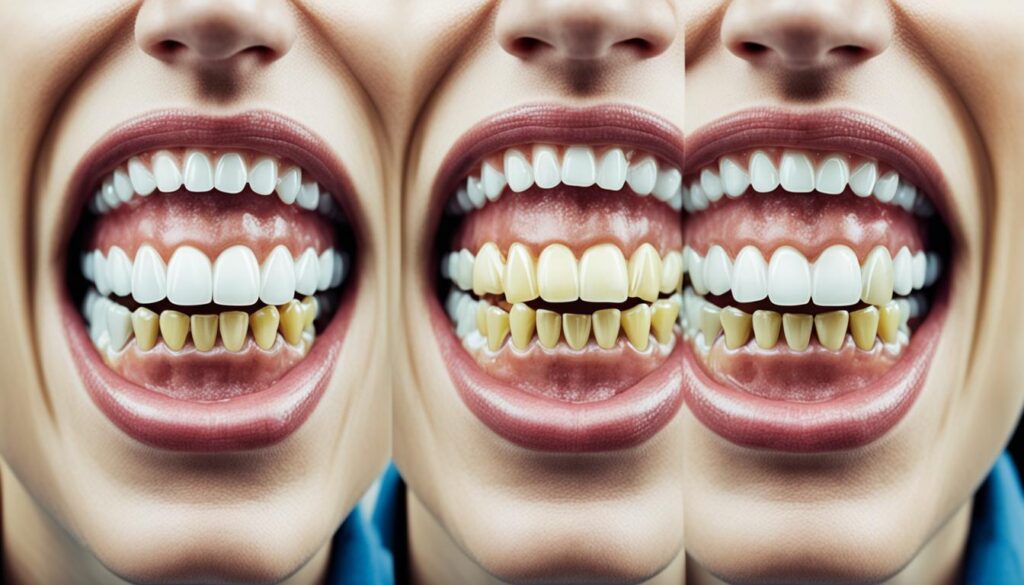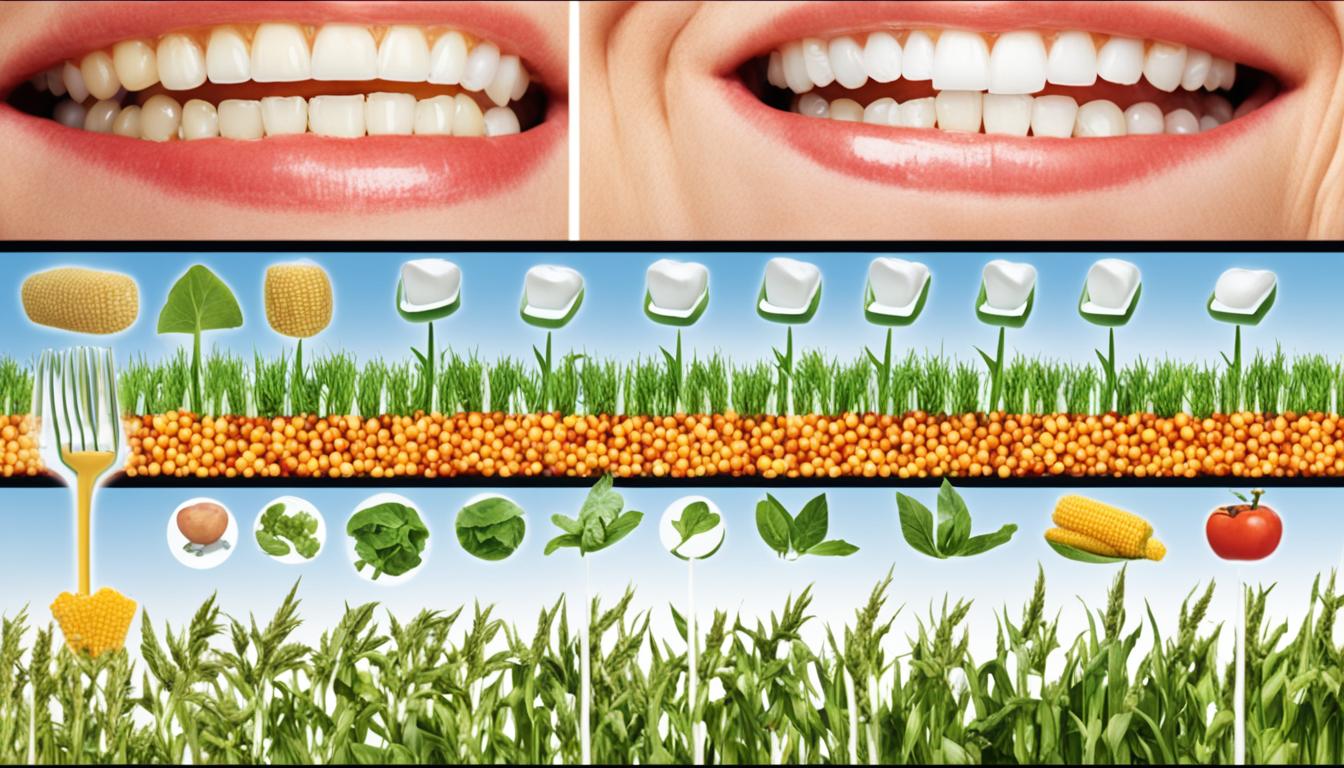Agriculture brought a big change in what humans ate. This shift affected our jaw structure and dental health. Our ancestors moved from hunter-gatherer lifestyles to farming. Their new diet impacted tooth alignment, leading to more need for braces today.
Before farming, humans had well-aligned jaws and teeth. The switch to agriculture slowly made jaws smaller. However, tooth size stayed the same. This mismatch left less room for teeth in the mouth.
Crowded teeth became common. It’s now the top reason people see orthodontists. The effects of farming diets on teeth have been widespread.
Today, one in five people worldwide have misaligned teeth. This shows how our food choices shape our dental health. Agricultural diets have greatly influenced the need for braces.
Key Takeaways
- The transition from hunter-gatherer to agricultural diets led to changes in human jaw structure.
- Agricultural diets contributed to the development of malocclusion and crowded teeth.
- Jaw size decreased in response to dietary changes, while tooth size remained relatively constant.
- Dental crowding is the most common reason for orthodontic referral today.
- The connection between agricultural diets and the need for braces highlights the impact of dietary history on dental health.
The Transition from Hunter-Gatherer to Agricultural Diets
The shift from hunter-gatherer to agricultural diets changed human history. It affected what people ate and their overall health. Hunter-gatherers ate diverse uncooked vegetables and meat, needing strong jaws to chew tough foods.
Their food came directly from nature, without modern conveniences. They had to work hard to find and prepare their meals.
Early farmers ate softer foods like cooked beans and cereals. These foods required less chewing and jaw strength. This change in diet came with farming and animal domestication.
The agricultural diet also changed human skeletal structure. Processed foods led to lighter, less-dense bones around the joints. These changes resulted from both diet and reduced physical activity.
This dietary shift marked a key moment in human evolution. It continues to impact our physical health and development. Our food choices play a crucial role in shaping our bodies and well-being.
How Agricultural Diets Contributed to Malocclusion and Crowded Teeth
The shift from hunting to farming changed human jaw development and dental health. Our ancestors ate softer, processed foods from farming. This led to shorter, weaker jaws compared to hunter-gatherers. However, tooth size stayed the same.
Hunter-gatherers ate tough, fibrous foods that required more chewing. This stimulated jaw growth and development. Farming foods were softer and didn’t stimulate jaw growth as much. This led to underdeveloped jaws that couldn’t fit all teeth.

Orthodontists often remove teeth before applying braces to fix crowding. They may extract up to four permanent teeth, plus wisdom teeth. This creates space to align the remaining teeth properly. While effective, this method can change facial structure.
Removing permanent teeth can affect facial symmetry and shape. It may result in a longer face with lower cheekbones. Some people experience thinner lips and a disproportionate nose. These changes show how diet affects jaw development and facial structure.
Agricultural Diet Braces Connection
The shift to an agricultural diet affected our teeth and jaw structure. It also created a need for teeth straightening and orthodontics. Ancient attempts at straightening teeth have been found in mummified remains.
People have long desired a perfect smile. This desire dates back centuries, not just in modern times.
In 1728, Pierre Fauchard wrote about methods for straightening teeth. He introduced the “Bandeau,” a device to expand the dental arch. His work laid the foundation for orthodontics.
Edward H. Angle advanced orthodontics in the early 1900s. He classified malocclusions, developed new appliances, and established the first orthodontic school and journal.
Our understanding of agricultural diet and malocclusion grew over time. This led to advancements in functional orthodontics. Earl Bergersen developed Ortho-Tain appliances in the 1970s.
These appliances guide jaw growth and correct orthodontic issues. They often replace traditional braces, offering a more natural approach to teeth straightening.

Leave a Reply